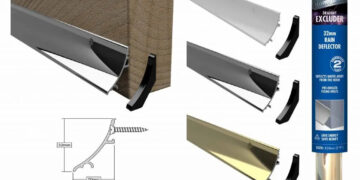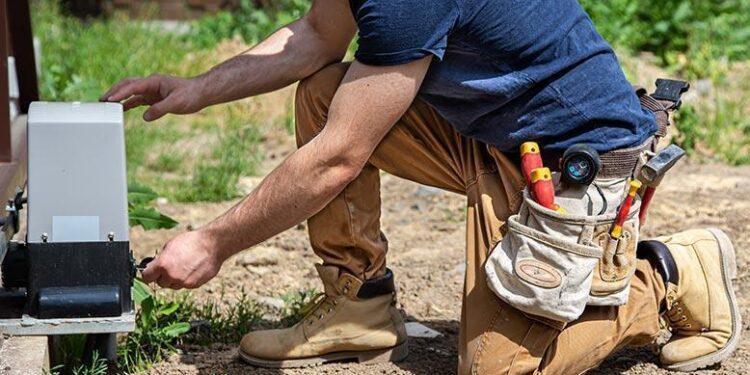In the modern business world, reliable electrical systems are a cornerstone of daily operations. Whether powering essential equipment, lighting workspaces, or ensuring safety systems remain operational, electrical installations and maintenance are critical. A well-designed and properly maintained commercial electrical system not only keeps your business running efficiently but also safeguards employees, customers, and property. This comprehensive guide provides insights into the importance, processes, and best practices for commercial electrical installation and maintenance.
The Importance of Commercial Electrical Systems
A commercial electrical system is far more complex than residential systems, designed to handle higher power demands and serve multiple purposes across large spaces. Proper commercial electrical installation and maintenance are essential for several reasons:
- Safety: Faulty wiring, overloaded circuits, and outdated systems are major safety hazards, potentially leading to fires or electrical shocks.
- Compliance: Adhering to local and national electrical codes is mandatory for businesses to operate legally.
- Efficiency: A well-maintained system reduces energy waste, lowering utility bills and minimizing environmental impact.
- Business Continuity: Downtime caused by electrical failures can disrupt operations, leading to financial losses and reputational damage.
- Longevity: Regular maintenance extends the life of your electrical infrastructure, delaying costly replacements.
Key Components of Commercial Electrical Systems
Before delving into installation and maintenance, it’s essential to understand the main components of commercial electrical systems:
- Electrical Panels: Also known as breaker panels, these distribute power to various parts of the building. Panels should be properly rated for the building’s electrical load.
- Wiring: Commercial wiring is typically more robust and involves different configurations, such as three-phase power for heavy equipment.
- Lighting Systems: Includes general, task, and emergency lighting tailored to the building’s specific needs.
- Power Outlets: Designed to handle higher power demands, including specialized outlets for equipment.
- Backup Systems: Generators and uninterruptible power supplies (UPS) ensure operations continue during outages.
- Safety Systems: Includes fire alarms, emergency lighting, and other systems crucial for occupant safety.
Steps in Commercial Electrical Installation
1. Planning and Design
The first step is a thorough planning and design phase. This involves:
- Conducting a needs assessment to determine power requirements.
- Creating a detailed electrical blueprint, including panel placement, wiring pathways, and outlet locations.
- Ensuring the design complies with local building codes and regulations.
2. Material Selection
Choosing high-quality materials ensures durability and reliability. This includes wires, switches, circuit breakers, and lighting fixtures. Energy-efficient and environmentally friendly options should be prioritized where possible.
3. Installation
During installation, licensed electricians follow the design plan to:
- Install electrical panels and circuits.
- Lay wiring and secure it within conduits.
- Mount outlets, switches, and lighting fixtures.
- Connect and test backup and safety systems.
4. Inspection and Testing
Once the installation is complete, thorough inspections ensure everything is functioning as intended. Testing includes:
- Checking for proper voltage levels.
- Ensuring connections are secure and free from faults.
- Verifying compliance with safety standards.
Maintenance Best Practices
Regular maintenance is essential to keep a commercial electrical system in optimal condition. Here are best practices for effective maintenance:
1. Schedule Routine Inspections
Regular inspections help identify potential issues before they become serious. Professional electricians can:
- Check for signs of wear and tear, such as frayed wires or corroded connections.
- Test circuit breakers and fuses.
- Ensure all safety systems are operational.
2. Perform Preventive Maintenance
Preventive measures can extend the life of your electrical system. This includes:
- Tightening loose connections.
- Cleaning components to remove dust and debris.
- Replacing worn-out parts proactively.
3. Upgrade Outdated Systems
Technology evolves rapidly, and outdated systems may no longer meet your needs or comply with current codes. Upgrades might include:
- Replacing old wiring with modern, insulated materials.
- Installing energy-efficient lighting solutions.
- Adding capacity to electrical panels to support new equipment.
4. Document Maintenance Activities
Maintaining detailed records of inspections, repairs, and upgrades ensures compliance with regulations and provides a clear history for troubleshooting future issues.
Hiring the Right Professionals
Both installation and maintenance require skilled professionals. Here’s what to look for when hiring a commercial electrical contractor:
- Licensing and Certification: Ensure the contractor is licensed and adheres to local building codes.
- Experience: Look for contractors with a proven track record in commercial projects.
- References and Reviews: Check references and online reviews to gauge reliability and quality of work.
- Insurance: Verify that the contractor carries adequate liability and workers’ compensation insurance.
- Communication: A good contractor should provide clear timelines, detailed estimates, and transparent communication throughout the project.
Common Challenges and Solutions
1. Overloaded Circuits
Solution: Conduct a load analysis and redistribute or upgrade circuits to handle the demand.
2. Power Outages
Solution: Install backup systems like generators and UPS to ensure uninterrupted operations.
3. Code Violations
Solution: Work with a licensed professional to identify and address non-compliant installations.
4. Energy Inefficiency
Solution: Upgrade to energy-efficient systems and implement smart technologies for better control and monitoring.
Conclusion
A well-executed commercial electrical installation and a consistent maintenance plan are vital for business operations, safety, and efficiency. From the initial design to regular upkeep, every step plays a crucial role in ensuring your electrical system meets current and future demands. By investing in quality materials, skilled professionals, and proactive maintenance, businesses can safeguard their operations and create a reliable foundation for success. For reliable electrical installation and maintenance services, reach out to our expert team today. We ensure safety, efficiency, and compliance with every project. Contact us to discuss your needs!












































